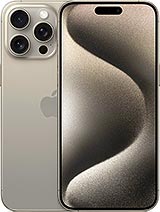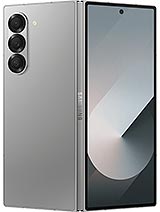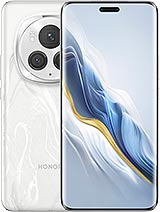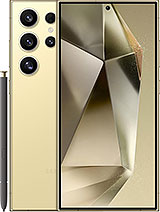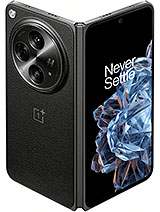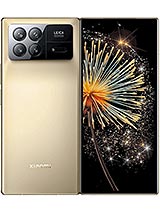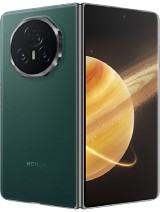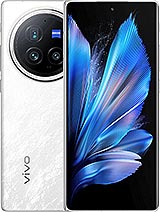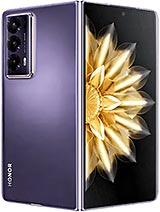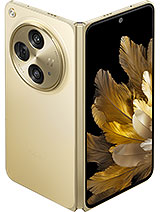Honor Magic V3 review

Extra-bright cover display, inner one not quite as much
The Magic V3 doesn't change a lot in the basic numbers of its display when compared to the previous model - diagonals and resolutions are the same, 120Hz refresh rate is plenty, and so are a billion colors. That's not to say there aren't improvements - in addition, that is, to the ones we talked about on the previous page.

Starting with the foldable internal display, we get a 7.92-diagonal and a 2,156x2,344px resolution with pixel density at 402ppi. Honor promises up to 1,600nits on this one, and, as usual, the manufacturers' numbers are for their own testing methods,, while in our setup, we got a little under 1,100nits in adaptive brightness mode, with the... tablet placed in bright ambient conditions. Subtract 500nits and that's what it can do when you take manual control of the slider. While we'd be quick to argue that 1,079nits is easily enough, it's also true that the competition is capable of pushing more nits - a lot more nits in some cases.
But you know how the Magic V3 wants to be seen as a regular bar phone in some ways, so its cover display is where it can pump out some serious brightness levels. The 6.43-inch panel with a 1,060x2,376px resolution was able to shine nearly 2,100nits in adaptive brightness mode, more than any of its competitors. Honor is also allowing over 800nits here when you're adjusting brightness manually, which is, again, a class-leading result.
Minimum brightness on both displays is around 2nits and both support high frequency PWM dimming (4,320Hz on the cover, 3,840Hz on the internal display), so you should be comfortable at the opposite end of the brightness spectrum as well.
Refresh rate
Both panels of the Magic V3 support refresh rates up to 120Hz and both are LTPO. Unlike the V2 where we only got 120Hz and 60Hz readings (and the occasional 90Hz), here we also got 1Hz from the Android tool. No 24Hz or 48Hz or such, though.
The 1Hz capability is what enables the full-screen Always-on Display feature that you can get on the cover screen. That one you can actually have always on, while the internal display only allows a 'tap to show' option. You do get a truly always-on mode on the foldable panel, just not the full-screen variety.

Of course, there's the usual selection of modes that let you cap things at 60Hz or leave most of the frame rate selection to the phone - both High and Dynamic will reach 120Hz, only Dynamic might limit things to 90Hz in cases when High will be cool with 120Hz. As we observed on the V2, the V3 will also allow high frame rate gaming, but not necessarily for every title that we know is capable of going over 60fps.
Streaming and HDR
The Magic V3 supports all major HDR standards, including HDR10+ and Dolby Vision. It's also got a Widevine L1 certification for playing back high-res DRM-protected content. Indeed, Netflix supports HDR10 and Dolby Vision at up to FullHD resolution on the Magic V3.

The Magic V3 will give its own images a boost in its own gallery app, but it doesn't readily support the Ultra HDR standard in Google Photos or Chrome.
AI Defocus Display
Honor has worked to combat transient myopia (temporary nearsightedness) by employing on-device AI algorithms to create a controlled defocus effect, thereby reducing the ill effects of prolonged staring at a screen at close distance. Our understanding of the mechanism of this condition we just found out about is limited, of course, but their research data shows that it's effective. It's a toggle in the display settings (Defocus Eyecare) and it's off by default.
Honor Magic V3 battery life
The Magic V3 gets a mostly insignificant but still welcome bump in battery capacity to 5,150mAh. It's not as large of a capacity as the vivo X Fold3 Pro's 5,700mAh powerpack, but it's still more mAhs than a lot of the competition.
We'll be quick to admit that we're not thrilled with the Active Use Score we got from the Magic V3 on its internal display. The numbers place it on par with the previous generation in three out of four tests, with the gaming longevity taking a bit of a dip. The V2 aside, competing devices are also better from an endurance standpoint.
Our new Active Use Score is an estimate of how long the battery will last if you use the device with a mix of all four test activities. You can adjust the calculation based on your usage pattern using the sliders below. You can read about our current battery life testing procedure here. For a comprehensive list of all tested devices so far, head this way.
Things don't look nearly as bad for the Honor on the cover display, where the Magic V3 is on par with the others, themselves roughly equal in most metrics - well, other than the vivo X Fold3 Pro that stands out as a bit of an overachiever in web browsing.
Charging speed
The Magic V3 arrives with a 66W Honor SuperCharge adapter bundled and that's what we've been getting with past Magic V's (including, well, the Magic Vs). Using that one for our testing, we recorded a peak of around 53W in the early stages of the process. Timing the Magic V3 to 100%, we got 46 minutes - slightly quicker than the previous generation, and essentially confirming what Honor claims in its press materials. The 82% we were looking at in the battery indicator at the half-hour mark is also an improvement over the V2's result.

The Magic V3 is in the middle of a tightly packed group of large foldables that take roughly 40 to 50 minutes for a full charge. The Galaxy Z Fold6 is a notable outlier - it needs twice that time.
A most impressive engineering feat we're seeing on the Magic V3 is the addition of wireless charging - the Magic V2 didn't have it, and now this one does, while also being even thinner. It's rated for up to 50W with compatible Honor peripherals.
Speaker test
The Magic V3's speaker system is inherited from the predecessor, at least in principle. There are two speakers, both in the same half of the device - top (when folded) or left (when unfolded and held in portrait). One of the speakers also outputs through a slit above the display, serving earpiece duty for voice calls.
Somewhat unusually, the top speaker (the earpiece one) is assigned the right channel when the Magic is held vertically - most other makers default to left and we don't really know why any of them do it the way they do it. In any case, both speakers also output the opposite channel's track, at a lower volume.



Bottom speaker • Top speaker • Earpiece
The Magic V3 returned an 'Average' score for loudness in our testing, a relatively low result and a notch below the previous generation. It does indeed lack the Galaxy's oomph in the low end, but it's does not feel as underpowered as the numbers suggest.
Use the Playback controls to listen to the phone sample recordings (best use headphones). We measure the average loudness of the speakers in LUFS. A lower absolute value means a louder sound. A look at the frequency response chart will tell you how far off the ideal "0db" flat line is the reproduction of the bass, treble, and mid frequencies. You can add more phones to compare how they differ. The scores and ratings are not comparable with our older loudspeaker test. Learn more about how we test here.
Reader comments
- Yeormarder
- 28 Mar 2025
- bJb
Magic OS have what issue with their software? Give detail.
- Anonymous
- 12 Mar 2025
- BMg
Fantastic hardware and terrible looking circle camera
- Anonymous
- 30 Jan 2025
- 3LU
Fantastic hardware spoiled with lousy software. Honor should consult and learn from Xiaomi
